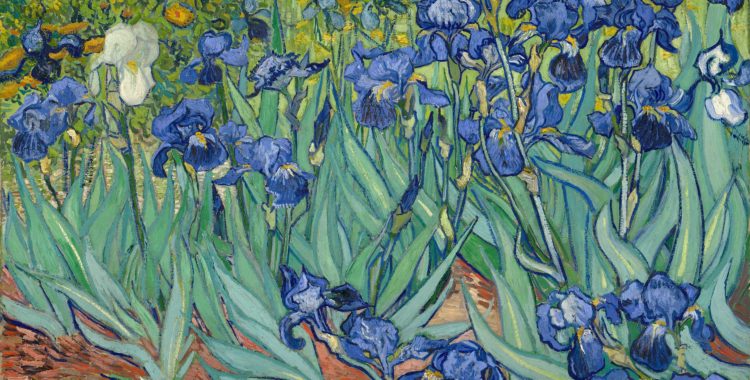
The Economics of Color, Part 2
May 25, 2016
by Diana Greenwald | Filed in: Interdisciplinary
The Wikipedia entry for “Starving Artist” features a painting by Vincent Van Gogh, Bedroom in Arles (1888). Van Gogh is, in many ways, the quintessential starving artist. He died a financial and professional failure and has gained a reputation as a misunderstood and marginalized genius—both in clickbait and institutional histories. Van Gogh’s poverty and psychological struggles are often cited as an influence on his characteristic swirling colorful style, on display in Cypresses (1889). However, another way his tenuous personal situation influenced his style was by limiting the quantity and quality of materials with which he could paint.
His budget constraint—like any other artisan or firm—limited the inputs he could use to create an output, in this case, paintings. Van Gogh addresses this fact directly in several of the many letters he penned. In one letter to the English painter Horace M. Levens, he writes:
Van Gogh’s inability to pay for a model forced him towards experimentation with color and creating his distinctive palate of “harmonize[d] brutal extremes.”
“I have lacked money for paying models else I had entirely given myself to figure painting. But I have made a series of color studies in painting, simply flowers, red poppies, blue cornflowers and myosotis, white and red roses, yellow chrysanthemums-seeking oppositions of blue with orange, red and green, yellow and violet seeking les tons rompus et neutres to harmonize brutal extremes. Trying to render intense color and not a gray harmony. Now alter these gymnastics I lately did two heads which I dare say are better in light and color than those I did before.” [1]
While Van Gogh provides an extreme example of poverty and experimentation with color, there is evidence that considering the cost of materials was formative for other artists and artisans across eras and geographies. The Maasai people of East Africa are known for wearing elaborate and extremely colorful beaded jewelry. These elaborate colors were, however, only widely available after the introduction of relatively inexpensive glass trading beads, particularly from Europe from the nineteenth century. Before the introduction of this supply, colorful beads were too expensive to be used extensively—and palettes were limited to pigments made with locally available natural resources.
Other examples of how cost forms color choice come from the price of the color blue over time, and the invention of the paint tube—an easy and inexpensive way to sell and transport ready mixed oil paints—in 1841. Color is one of the most important links between art and its economic context.
[1] Letter from Vincent van Gogh to Mr. Levins, Paris Aug-Oct 1887, reproduced in Charles, Victoria. Vincent van Gogh. New York, US: Parkstone International, 2012, p. 67. ProQuest ebrary. Web. 23 May 2016.
The Effects of Brexit on the Arts, Lessons from History >>
